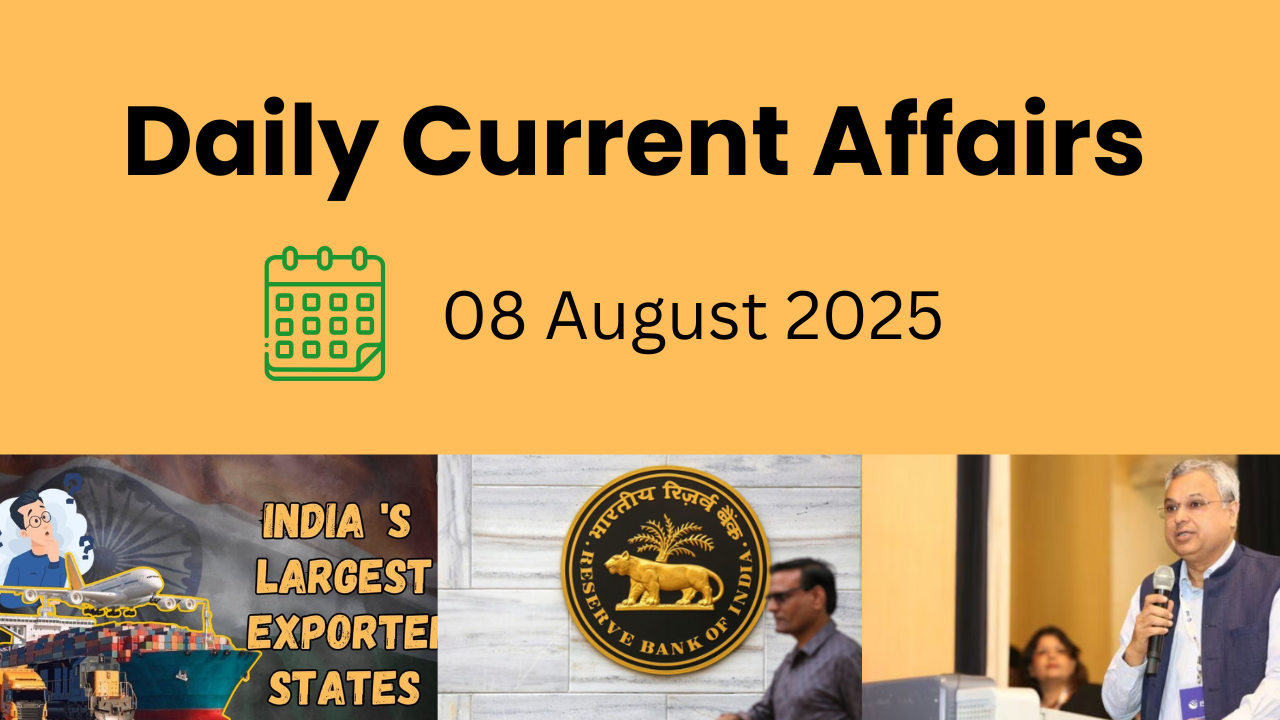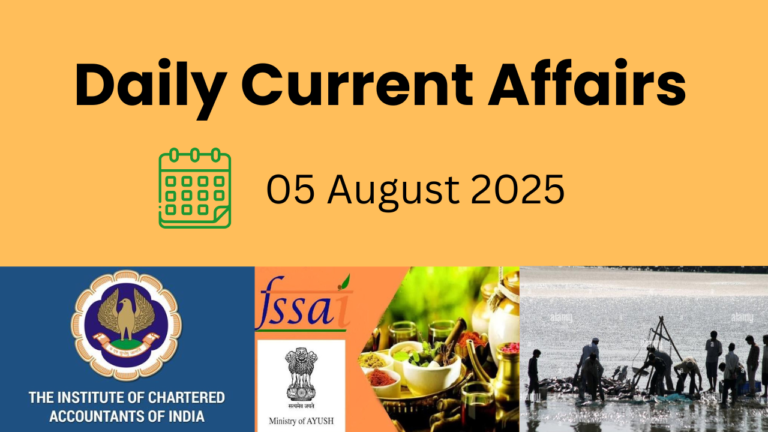1. India and Russia Ink Agreement to Boost Industrial & Technological Partnership
Context: India and Russia have signed a new agreement aimed at strengthening cooperation in industrial development and technology exchange. The pact is expected to open fresh avenues for collaboration between businesses, research institutions, and technology-driven industries in both countries.
Details:
- Purpose of the Agreement
- Enhance industrial cooperation in priority sectors.
- Promote technology transfer and joint development of innovative solutions.
- Facilitate mutual investments in manufacturing and advanced technology projects.
- Focus Areas
- High-tech manufacturing.
- Machine-building and engineering industries.
- Information technology and digital solutions.
- Energy equipment and transport systems.
- Institutional Linkage
- The agreement will enable public and private sector organisations from both nations to partner for research, product development, and skill-building.
Strategic Importance
- For India: Helps in boosting the ‘Make in India’ initiative by attracting advanced technology and industrial expertise.
- For Russia: Offers a reliable partner in Asia for industrial cooperation and market access.
- For Bilateral Relations: Reinforces the long-standing strategic partnership, moving beyond defence into broader industrial and tech-driven collaboration.
Conclusion:
The India–Russia agreement signifies a shift towards a more diversified partnership, moving beyond traditional defense cooperation into industrial and technological spheres. It strengthens economic ties, supports innovation, and promotes mutual growth, making it an important step in deepening bilateral relations.
2. FIEO Releases State-wise Export Performance Report for 2024–25
Context: On August 5, 2025, the Federation of Indian Export Organizations (FIEO), under the Ministry of Commerce and Industry (MoCI), released the Overview of States’ Exports 2024–25. The analysis is based on export data compiled by the Directorate General of Commercial Intelligence & Statistics (DGCIS) and highlights state-level contributions to India’s export performance.
Details
Gujarat’s Continued Dominance
- Top Exporter in FY 2024–25 – Gujarat has maintained its status as the leading exporter among Indian states, with total export shipments valued at approximately ₹9.83 lakh crore (equivalent to USD 116.33 billion).
- Share of National Exports – This accounts for 26.6% of India’s overall export volume for the year, cementing the state’s central role in the country’s trade performance.
- Industrial Base – Gujarat’s export strength is rooted in its industrial clusters specializing in petroleum products, chemicals, pharmaceuticals, and gems & jewellery.
Key Contributor – Jamnagar
- Highest Contributing District – Jamnagar emerged as Gujarat’s largest export contributor in FY 2024–25.
- Contribution Share – It contributed 36.91% of Gujarat’s total exports, amounting to ₹3.63 lakh crore.
- Industrial Role – Jamnagar is globally recognized for hosting some of the world’s largest oil refining complexes and plays a crucial role in petroleum product exports.
Performance Change from Previous Year
- In FY 2023–24, Gujarat’s exports were valued at USD 134.39 billion, which means the state experienced a slight decline in value terms in FY 2024–25.
- The drop may reflect global market fluctuations, changes in crude oil prices, or shifting demand in international markets for petroleum products and other export goods.
Other Leading Exporting States
- Maharashtra and Tamil Nadu followed Gujarat as major contributors to India’s exports.
- While exact figures for these states are not provided in the excerpt, their consistent industrial output in automobiles, engineering goods, textiles, and IT services ensures their position among the top exporters.
Conclusion: The 2024–25 FIEO state export analysis underscores Gujarat’s pivotal role in sustaining India’s export momentum, even amid a modest decline compared to the previous year. The state’s strength lies not just in sheer volume but also in the presence of globally significant industrial hubs like Jamnagar, which alone contributes over a third of Gujarat’s total exports.
Maharashtra and Tamil Nadu remain strong competitors, each powered by diverse manufacturing and service-based export portfolios. However, Gujarat’s combination of large-scale refining capacity, specialized manufacturing clusters, and an efficient port network gives it a structural advantage in global trade.
3. MoSPI Proposed new base year for GDP, IIP, and CPI
Context: The Ministry of Statistics & Programme Implementation (MoSPI) is in the process of updating the base year used for calculating India’s key economic indicators. This update aims to better reflect current structural changes, consumption patterns, and data sources, thereby enhancing the accuracy and reliability of economic statistics.
Details
GDP & IIP
- MoSPI proposes shifting the base year for Gross Domestic Product (GDP) and Index of Industrial Production (IIP) from the outdated 2011–12 to 2022–23.
- The new GDP series is slated for release on 27 February 2026, while the revised IIP data is expected to be published from FY 2026–27.
CPI (Consumer Price Index)
- The base year for CPI will be updated from the current 2012 to 2024.
- The CPI’s item basket and weightings will be derived from the Household Consumption Expenditure Survey (HCES) 2023–24, replacing the earlier 2022–23 data plan.
- The revamped CPI series is expected to be launched in the first quarter of 2026.
Need for Revision
- Periodic base-year updates ensure indices remain representative of the current economic and consumption landscape.
- The updated series will incorporate modern data sources such as GST, Public Finance Management System, Vahan portal, and UPI transaction data to improve accuracy.
Conclusion: MoSPI’s proposed revision of base years—to 2022–23 for GDP and IIP, and to 2024 for CPI—marks a critical step toward modernizing the country’s statistical framework. By aligning calculations with recent data and contemporary economic realities, the initiative aims to generate more precise and relevant macroeconomic indicators. The phased rollouts—GDP in February 2026, and CPI and IIP shortly thereafter—will enhance planning, policy formulation, and economic analysis.
4. Highlights of RBIs 3rd BI-monthly monetary policy FY 2025-26
Context: In its third bi-monthly monetary policy review for FY 2025-26 held on August 6, 2025, the Reserve Bank of India (RBI) kept the key repo rate unchanged at 5.50%, maintaining a neutral monetary policy stance. This follows earlier rate cuts in the year and underscores RBI’s intent to balance support for growth while keeping inflation in check.
Details
• The repo rate remains at 5.50%, Standing Deposit Facility (SDF) rate at 5.25%, Marginal Standing Facility (MSF) and Bank Rate at 5.75%, and reverse repo rate at 3.35%. These decisions reflect a deliberate pause to allow the effects of earlier rate cuts to permeate the economy.
- The Cash Reserve Ratio (CRR) is maintained at 3% and the Statutory Liquidity Ratio (SLR) at 18%, ensuring sufficient liquidity in the banking system.
- GDP growth projection for FY 2025-26 is retained at 6.5%, supported by healthy rural demand, monsoon performance, and robust consumption. Quarterly projections are: Q1 at 6.5%, Q2 at 6.7%, Q3 at 6.6%, and Q4 at 6.3%, with Q1 FY 2026-27 projected at 6.6%.
- The CPI inflation forecast is revised down to 3.1% from 3.7%. Quarterly estimates: Q2 at 2.1%, Q3 at 3.1%, Q4 at 4.4%, and Q1 FY 2026-27 at 4.9%. Headline CPI inflation dropped to a 77-month low of 2.1% in June, led by a sharp decline in food prices.
Consumer-Focused
• Three consumer-centric measures were announced:
- Doorstep re-KYC camps to simplify compliance for account holders.
- Ease of settlement for accounts and safe deposit locker contents of deceased customers.
- RBI Retail-Direct enhancements, including SIP-based investments in T-bills.
Conclusion: The RBI’s third bi-monthly policy review reflects a measured pause—holding the repo rate at 5.50% and maintaining a neutral stance. This approach allows prior policy easing to work through the system while providing room to watch for global risks and inflationary pressures. With GDP growth expectations sustained at 6.5% and inflation forecasts revised downward, the central bank lays a cautious foundation to support sustained growth without compromising price stability. These reforms, combined with consumer-focused measures and resilient external balances, underpin a balanced macroeconomic outlook.
5. RBI issued final co-lending norms to enhance risk sharing and transparency
Context: On August 6, 2025, the Reserve Bank of India (RBI) issued its final co-lending guidelines, aimed at modernizing and regulating joint lending between banks and non-banking financial companies (NBFCs). These rules are set to take effect from January 1, 2026 and mark a pivotal shift in enhancing risk-sharing and transparency across collaborative loan arrangements.
Details:
Scope & Applicability
- The new framework applies to all regulated entities (REs)—including commercial banks (excluding small finance banks, regional rural banks, and local area banks), all-India financial institutions, and NBFCs (including housing finance companies).
Key Provisions
- Minimum 10% loan retention: Every co-lender must retain at least 10% of each loan on its own books.
- Default Loss Guarantee (DLG) capped at 5%: The originating entity may provide a DLG of up to 5% of the outstanding portfolio.
- Single KYC requirement: The borrower will undergo only one KYC process, avoiding duplication between lenders.
- 15-day loan transfer rule: The co-lender must record its share on its books within 15 days of the loan origination; failure to do so voids the co-lending arrangement.
- Enhanced disclosures & customer protection: Loan agreements must clearly outline roles, borrower support mechanisms, and a single point of contact. REs must disclose co-lending partners and terms on their websites and include relevant provisions in their credit policies, including grievance redressal mechanisms and business continuity plans.
Objective of the Changes
- These norms are designed to align incentives, curb risk transfer, and ensure that all parties maintain a stake in the loan portfolio.
- By standardizing processes, the RBI intends to boost operational clarity, improve borrower protection, and strengthen the co-lending ecosystem.
ConclusionThe RBI’s final co-lending norms represent a decisive overhaul aimed at creating a more stable, transparent, and fair co-lending framework. By mandating minimum loan retention, streamlining KYC procedures, enforcing unified asset classification, and enhancing disclosures, the directive aligns lenders’ interests while safeguarding borrower rights. While these measures may raise operational costs and complexity, they lay the foundation for responsible and scalable lending partnerships, starting January 2026.
6. Amazon India and FIEO signed MOU to boost E-commerce exports to MSMEs in India
Context: On August 6, 2025, Amazon India signed a Memorandum of Understanding (MoU) with the Federation of Indian Export Organisations (FIEO) to strengthen e-commerce export opportunities for Indian Micro, Small, and Medium Enterprises (MSMEs). The collaboration aims to boost India’s export competitiveness by leveraging Amazon’s global marketplace and FIEO’s trade facilitation expertise.
Details
E-commerce Export Task Force
• Amazon and FIEO will establish an E-commerce Export Task Force to address infrastructure, regulatory, and procedural challenges faced by Indian exporters.
• The task force will focus on improving customs clearance, enhancing logistics capabilities, and simplifying compliance for cross-border e-commerce.
Capacity Building Initiatives
• Jointly conducted workshops and training programs will be organised for MSMEs to develop their e-commerce readiness.
• Exporters from key sectors such as home textiles, home décor, health and personal care, apparel, toys, packaged foods, and handicrafts will receive targeted support to meet international quality and compliance standards.
Support for Local Seller Communities
• Creation of offline local seller communities to facilitate peer-to-peer learning and shared access to service providers.
• This initiative will help small businesses network, share best practices, and integrate into the global supply chain more efficiently.
Sectoral Focus
• The MoU particularly targets categories like handicrafts, apparel, home décor, and toys — sectors where Indian MSMEs have strong traditional capabilities and high export potential.
Conclusion:
The Amazon India–FIEO MoU represents a strategic step toward scaling India’s e-commerce-led export ecosystem. By combining Amazon’s international reach with FIEO’s trade expertise, MSMEs will gain improved access to global markets, streamlined export processes, and enhanced product competitiveness. This collaboration is expected to contribute to India’s goal of increasing its share in global trade, while empowering small businesses to become globally recognized brands.




